From Runways to Reality: Translating High-Fashion Hair | Wearable Avant-Garde Looks
The Allure of the Avant-Garde: Why We're Obsessed with Runway Hair
Fashion Week is a spectacle. From Paris to New York, designers unveil their latest collections, and with them, a vision of the future. But the clothes are only half the story. The hair—often sculptural, gravity-defying, and seemingly impossible—is a critical element of this narrative. We watch, mesmerized, as models walk the catwalk with slicked-down micro-fringes, cloud-like halos of texture, or braids woven with unexpected materials. The immediate reaction is often a mix of awe and a quiet thought: "But who would actually wear that?" This is the essential question we're here to explore. This guide is your key to translating high-fashion hair from a conceptual art form into a personal style statement.

The purpose of runway hair isn't practicality; it's pure expression. It’s designed to complement the designer's collection, evoke a specific mood, and create an unforgettable image that will be captured in magazines and dissected by critics. These styles are the haute couture of hair, pushing the boundaries of creativity and technique. However, hidden within these dramatic presentations are the seeds of the next major trends. The core concepts—a specific texture, a unique shape, a bold color placement—are the elements that can be distilled, softened, and adapted for the real world. By learning to deconstruct these looks, you can borrow a touch of high-fashion magic and make it your own.
This journey from the runway to reality is where true personal style is born. It’s about more than just copying a look; it's about understanding the inspiration and reinterpreting it to fit your personality, lifestyle, and hair type. Whether it's toning down a glossy 'wet look' for a sophisticated evening out or incorporating a single, sculptural braid into your everyday ponytail, the possibilities are endless. We'll break down the most iconic runway trends, showing you how an experienced stylist can help you capture the essence of high fashion in a way that feels authentic and, most importantly, wearable.
The Art of Deconstruction: Understanding Runway Hair's Purpose
Before you can adapt a runway look, it's crucial to understand why it exists in its extreme form. High-fashion hair is not created with a morning commute or an office meeting in mind. It is a temporary, high-impact art installation designed to last for the few minutes a model is on the catwalk. Its primary function is to serve the designer's artistic vision, acting as the final, crucial accessory that completes the head-to-toe narrative. A collection inspired by futuristic architecture might feature sharp, geometric bobs, while one drawing from romanticism could showcase soft, ethereal waves and delicate floral adornments. The hair helps tell the story.
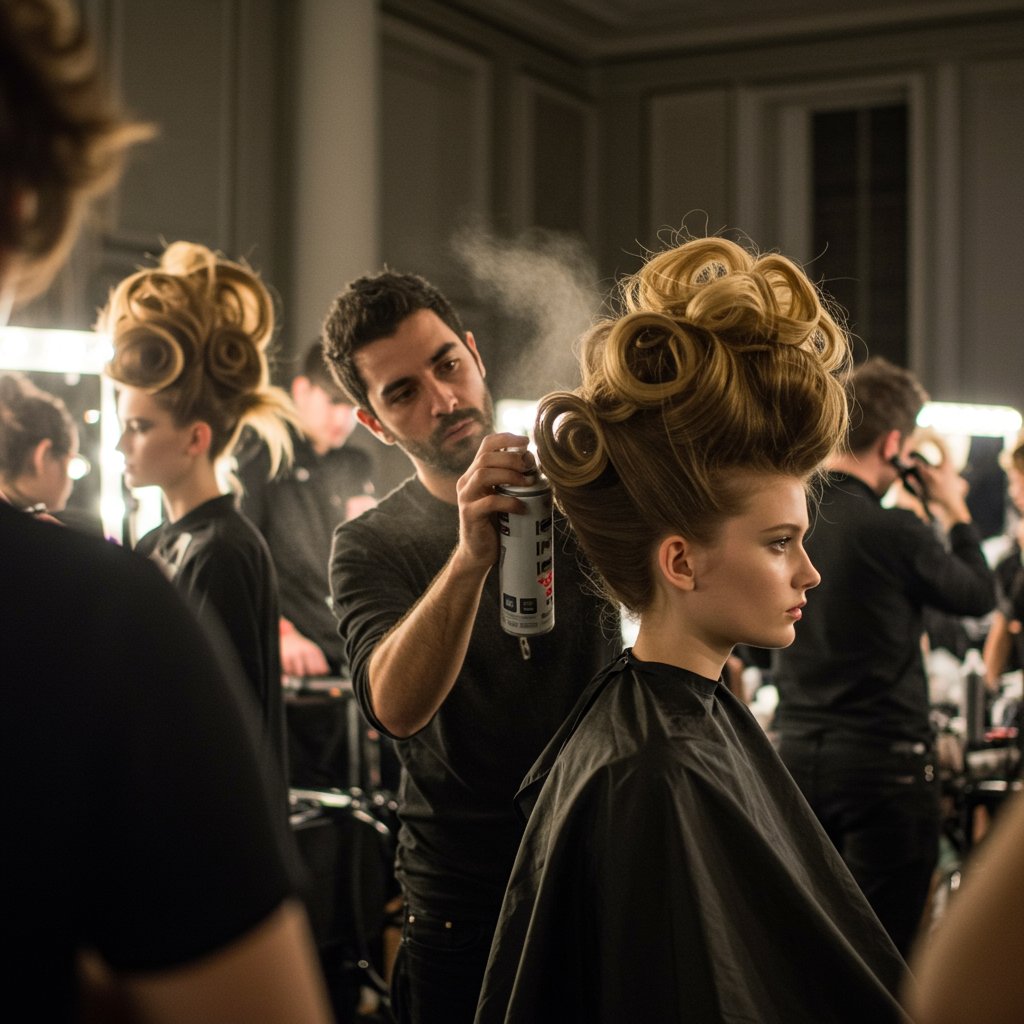
Think of the stylist backstage as a sculptor or a painter. Their medium is hair, and their canvas is the model. They are working under immense pressure to create dozens of identical, perfect looks that will hold up under hot lights and constant movement. This often requires extreme products and techniques—think entire cans of hairspray, industrial-strength gels, and complex internal structures built with wire and padding. The goal is a dramatic silhouette and a powerful photographic image, not comfort or longevity in the real world. Understanding this context is the first step in freeing yourself from the idea that these looks are meant to be copied literally.
By viewing runway hair through this artistic lens, you can begin to appreciate it for what it is and see the potential within. Instead of dismissing a style as "too weird," ask yourself what the core idea is. Is the stylist playing with texture? Are they emphasizing a certain shape or line? Is there a unique color story? When you shift your perspective from literal interpretation to conceptual inspiration, you unlock the ability to see the wearable trend hiding within the avant-garde. This deconstruction is the secret skill that professional stylists use to stay ahead of the curve and bring innovative ideas to their clients.
Trend Spotting: Identifying the Core Elements of a Look
Once you understand the 'why' behind runway hair, you can master the 'what.' Trend spotting is the skill of looking past the theatricality to pinpoint the fundamental element that makes a style exciting. Every avant-garde look can be broken down into its core components: texture, structure, color, and accessories. By isolating these elements, you can decide which one resonates with you and how it can be integrated into your personal style. An experienced stylist excels at this, seeing the potential for a soft, voluminous blowout in a cloud of runway frizz, or a chic, slicked-back bun in a gel-sculpted masterpiece.
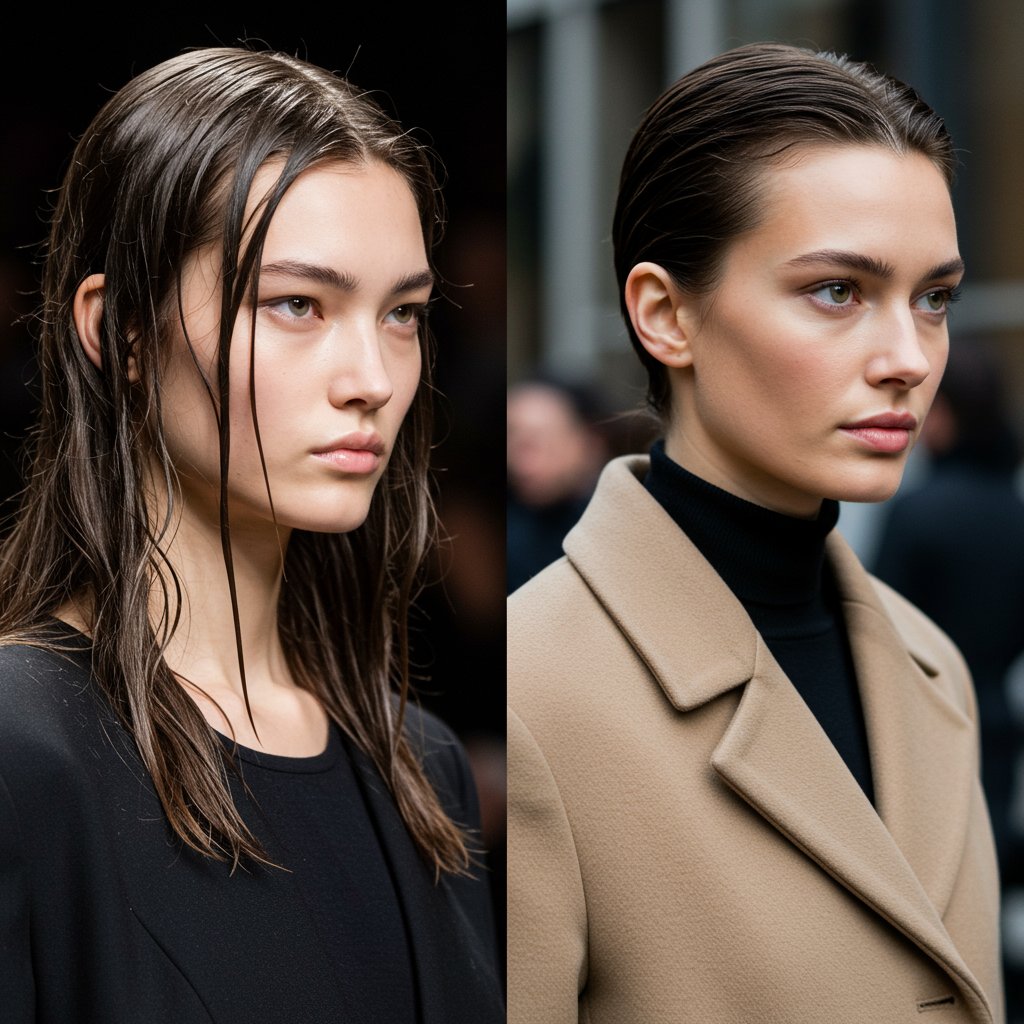
Decoding Texture: From Wet Looks to Cloud Hair
Texture is often the most accessible runway element to translate. The 'wet look' is a perennial favorite, often appearing on the runway as hair that looks genuinely drenched. The real-world adaptation is a sophisticated, high-gloss finish—think 'damp' rather than 'dripping.' This can be achieved with a combination of shine serums, light-hold gels, and pomades to create a sleek, polished effect that’s perfect for an evening event. On the other end of the spectrum is 'cloud hair'—a halo of soft, airy, almost frizzy texture. While the runway version might be unmanageable, the wearable translation is about creating maximum, touchable volume and embracing a bit of natural texture with volumizing mousses and gentle diffusing.Analyzing Structure: Braids, Knots, and Sculptural Shapes
Structure refers to the overall shape and form of the hairstyle. Runways are filled with intricate, complex braids, gravity-defying updos, and razor-sharp geometric cuts. Translating these requires simplification and proportion. That elaborate cage of braids seen on the runway could become a single, beautifully executed fishtail or Dutch braid used as an accent. A towering, sculptural topknot can be scaled down into a sleek, twisted chignon with a clean, architectural feel. The key is to capture the essence of the shape—the clean lines, the interesting twists, the unexpected placement—without replicating the impractical scale and complexity.Interpreting Color: Bold Statements vs. Subtle Hues
Runway hair color is often used for maximum graphic impact—think bold panels of neon, dip-dyed ends in shocking pink, or stark, contrasting color-blocking. For everyday wear, these ideas can be beautifully softened. A panel of electric blue can be reinterpreted as a few subtly placed 'peekaboo' highlights in a deeper navy shade. A stark, dip-dyed look can become a soft, blended ombré or balayage with a whisper of pastel at the ends. The concept of graphic color placement can also be translated into more natural tones, using a darker shade underneath to create depth and dimension. It's about taking the bold idea and customizing the intensity to a level that feels right for you.The Wet Look: From Soaked Strands to Subtle Sheen
The 'wet look' is one of the most enduring and versatile trends to emerge from the runway. Season after season, designers send models down the catwalk with hair that appears drenched, slicked back, or dripping with high-octane gloss. It evokes a range of moods, from the raw, just-surfaced-from-the-ocean vibe to a futuristic, liquid-metal sheen. On the runway, this effect is often achieved with copious amounts of heavy gel, water, and glossing sprays, creating a dramatic but fleeting style that wouldn't survive an hour in the real world. The beauty of this trend, however, lies in its adaptability.
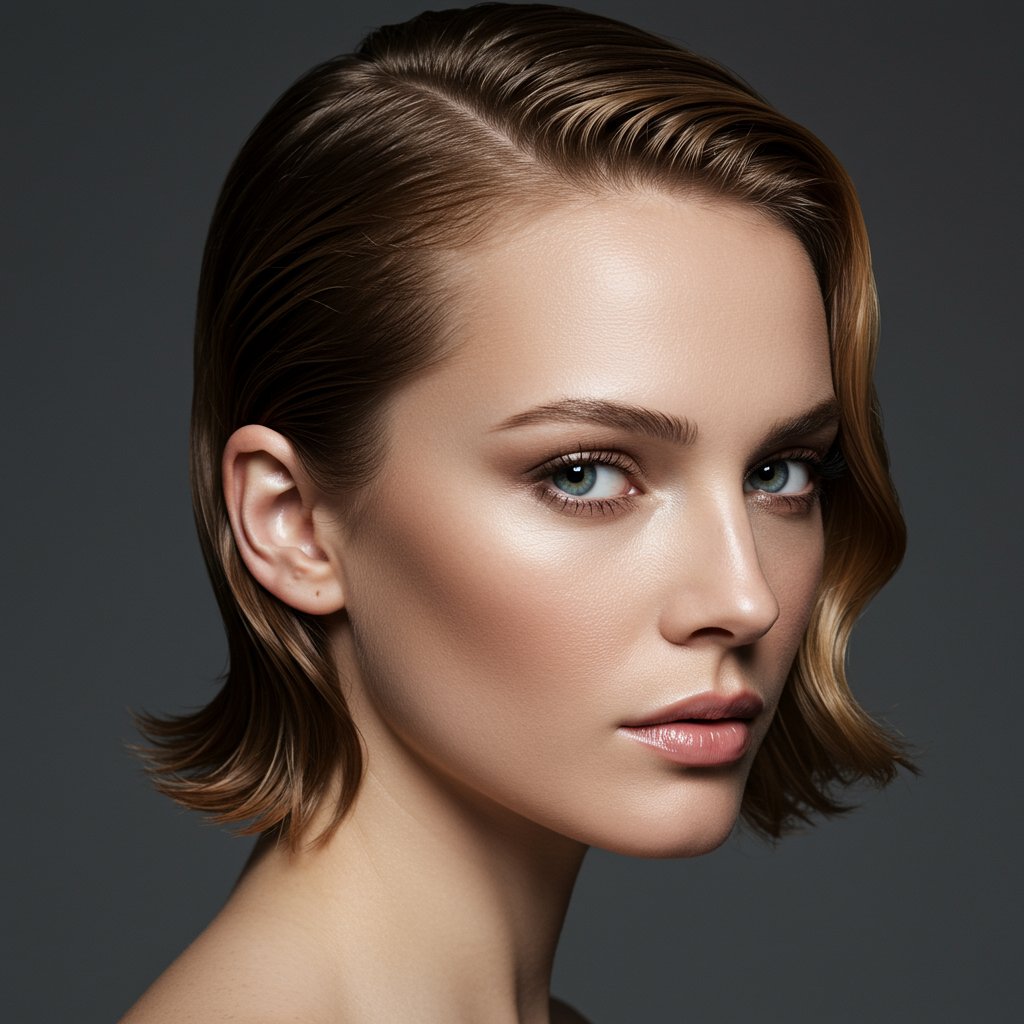
Translating the wet look for reality is all about control and placement. Instead of an all-over drenching, the focus shifts to creating a strategic, sophisticated sheen. The most popular wearable version is the slicked-back crown. This involves applying a cocktail of products—typically a strong-hold gel mixed with a shine serum or hair oil—to the roots and combing the hair straight back off the face. The lengths and ends of the hair are left dry and natural, creating a stunning textural contrast. This look is powerful, chic, and keeps hair neatly out of the way, making it a perfect choice for a formal event or a confident office look.
For a softer, less intense take, you can aim for a 'damp' or 'glass hair' finish. This involves using lighter products like leave-in conditioners, shine sprays, and light pomades to create a healthy, hydrated glow without the stiffness of gel. The goal is hair that looks incredibly healthy and reflective. This approach can be applied to a sleek ponytail, a sharp bob, or even long, loose waves. A stylist can recommend the perfect product combination for your hair type to achieve that coveted liquid shine without weighing your hair down or making it feel greasy. The key is to move from 'soaked' to 'luminous.'
Sculptural Updos & Braids: Taming the Avant-Garde
Structure and shape are the playgrounds of runway stylists. We often see towering updos that defy gravity, braids woven into intricate patterns resembling macramé, and knots tied with architectural precision. These styles are breathtaking in their complexity and artistry, but their direct application is nearly impossible for daily life. They often rely on hidden scaffolding, padding, extensions, and a team of stylists to create. However, the core principles of clean lines, interesting shapes, and woven textures are ripe for real-world interpretation.
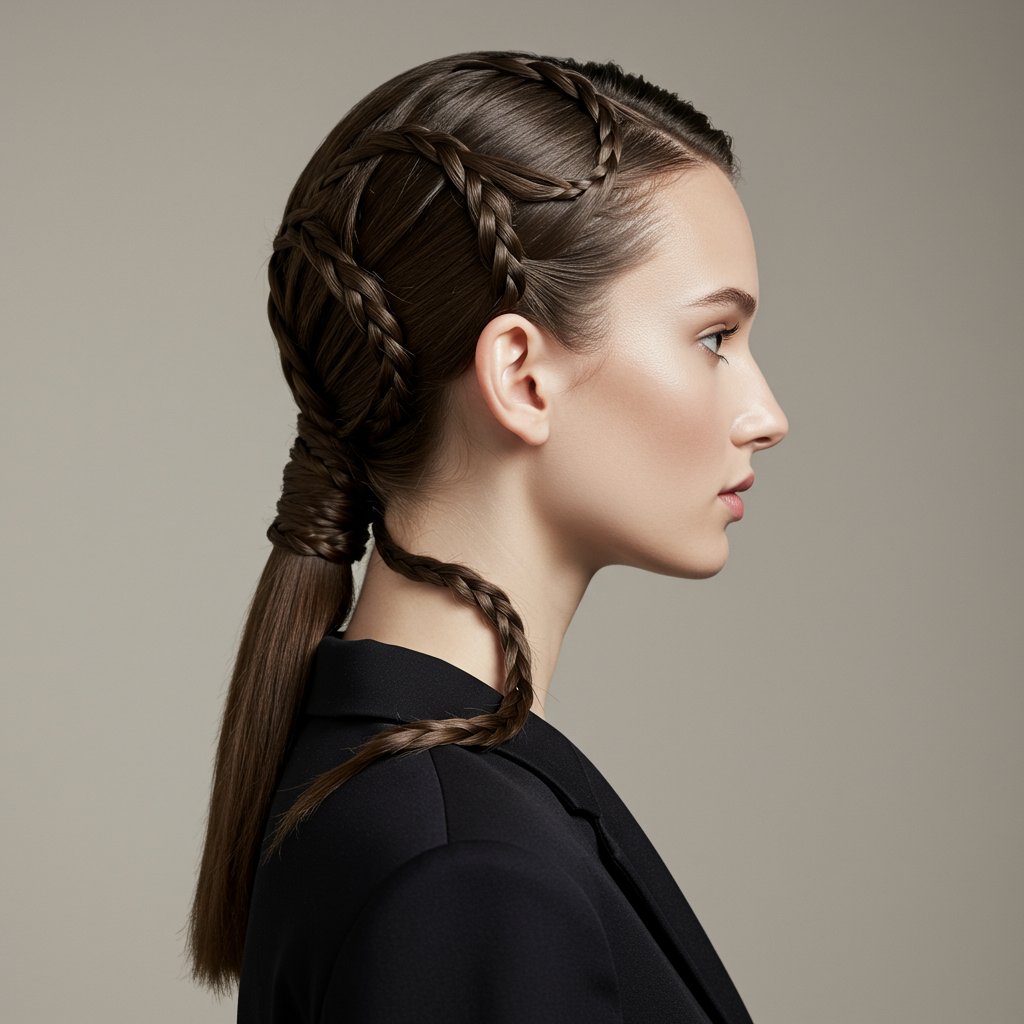
The key to translating sculptural styles is simplification and focus. Instead of trying to replicate an entire complex updo, select one element that inspires you. For example, a runway look featuring multiple interconnected braids can be distilled into a single, perfectly executed statement braid. A sleek, high ponytail wrapped in a unique, geometric pattern, or a Dutch braid that snakes along the hairline before merging into a low bun, captures the spirit of the original without the overwhelming complexity. It's about turning a major structural event into a subtle but impactful detail.
Professional hair salons are the ideal place to explore these styles. A skilled stylist has the technical ability to create clean, secure structures that last. They can take your inspiration photo and break it down, suggesting a version that works with your hair's length, thickness, and texture. They might suggest a 'bubble ponytail' for a modern, playful look, or a twisted, chignon-like knot that has an elegant, minimalist feel. The goal is to create a style that looks intentional and polished, borrowing the unique shapes from the runway to elevate a classic updo into something special.
Extreme Textures: From Frizzy Halos to Polished Volume
Texture is a powerful tool for storytelling on the runway. We've seen it all: from explosive 'cloud hair' and exaggerated '80s-style crimping to hyper-sleek, glass-like straightness. These extremes are designed to create a memorable silhouette and feeling. The 'frizzy halo,' for instance, might be used to evoke a sense of wildness or freedom, while pin-straight hair can feel futuristic and severe. The wearable versions of these textures are about capturing the mood while ensuring the hair looks healthy, intentional, and touchable.
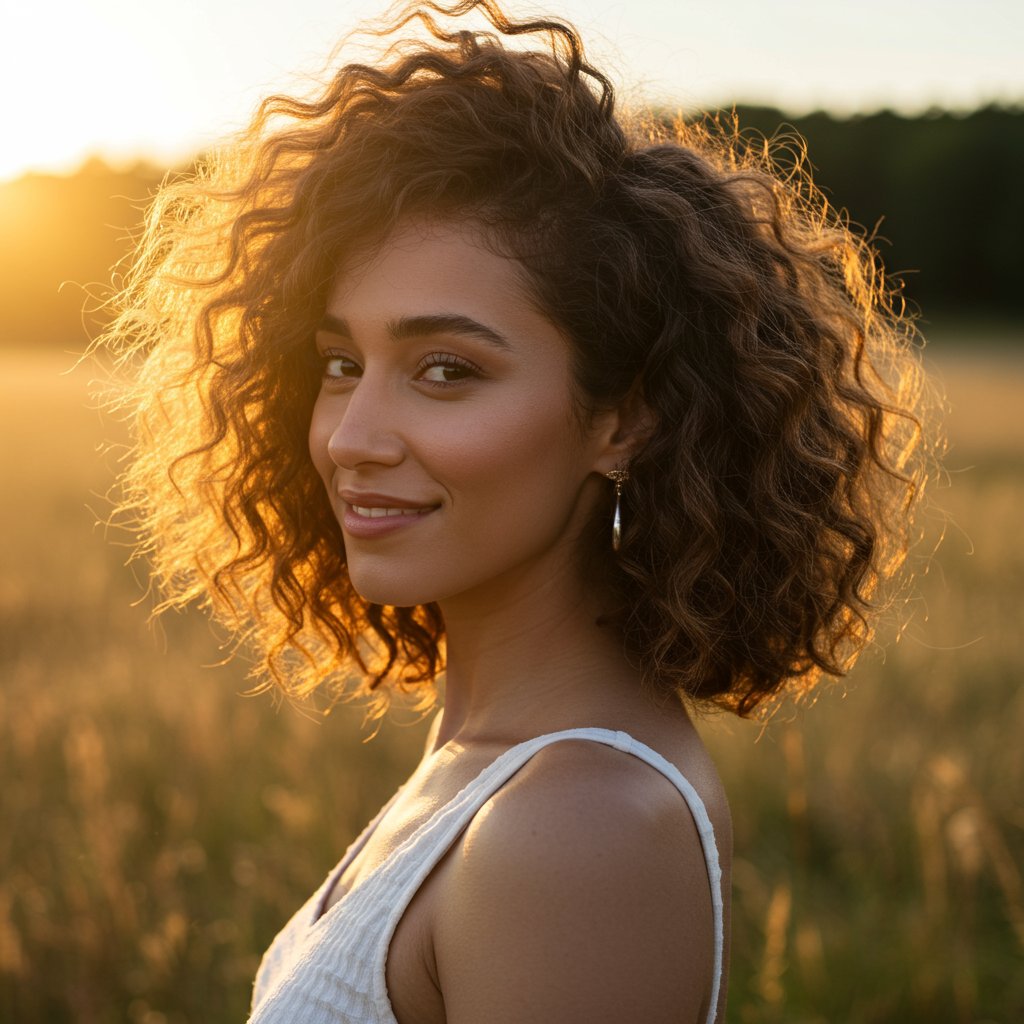
Let's take 'cloud hair,' which celebrates volume and a soft, airy texture. The runway version might look like a beautiful, artistic storm of frizz, achieved by extensive backcombing and texturizing sprays. To make this wearable, the focus shifts from frizz to controlled volume and definition. This can be achieved by using a volumizing mousse at the roots, blow-drying with a diffuser to encourage natural waves and curls, and finishing with a light-hold texturizing spray. The result is hair with body, movement, and a soft, romantic feel, rather than an unmanageable halo.
Similarly, the trend of all-over micro-crimping can feel dated if replicated exactly. A modern interpretation involves using texture as an accent. A stylist might crimp a few hidden sections of hair underneath the top layer to create unexpected volume and lift without the obvious pattern. Alternatively, a crimping iron can be used to add detail to a ponytail or a single braid, creating a cool, graphic contrast against the rest of the hair's smooth texture. It's about using these extreme textures strategically, as a tool to enhance a style rather than being the entire style itself.
Bold Accessories: The Wearable Approach
Hair accessories on the runway are rarely subtle. They are often oversized, made of unconventional materials, and integral to the architectural shape of the hairstyle. We see models adorned with everything from large metal sculptures and full-head veils to cascades of pearls and dramatic floral arrangements. While a headpiece that doubles as a helmet might not be practical for grocery shopping, the underlying trend of accessorizing hair is incredibly wearable. The secret is scaling down the size and drama while retaining the style's intent.

Think of the runway as a source of ideas for materials, placement, and pairings. If a show features oversized, chunky gold chains woven through the hair, the real-world version could be a single, elegant gold barrette or a chic ponytail holder with a metallic detail. If you love the romantic look of fresh flowers in the hair, swap a full-on flower crown for a few delicate blossoms pinned into a soft updo for a wedding or special occasion. The key is to let the accessory complement your hairstyle, not overpower it.
Placement is another key takeaway from high-fashion looks. Notice how runway stylists use accessories to create focal points or interesting asymmetries. You can replicate this by placing a row of simple bobby pins or pearl clips just above the ear for a modern, graphic touch. A beautiful silk scarf can be tied around the base of a ponytail or woven through a braid, adding a pop of color and texture. The goal is to choose one statement accessory and let it be the star, keeping the rest of the hairstyle relatively simple and polished to maintain a chic, balanced look.
The Consultation is Key: Working With Your Stylist
While inspiration is everywhere, the successful translation from runway to reality often happens in the salon chair. An experienced professional stylist is your most valuable asset in this process. They are not just technicians; they are artists and problem-solvers who have a deep understanding of hair types, face shapes, product performance, and cutting-edge techniques. Bringing your high-fashion inspiration to a stylist is the beginning of a collaborative conversation.
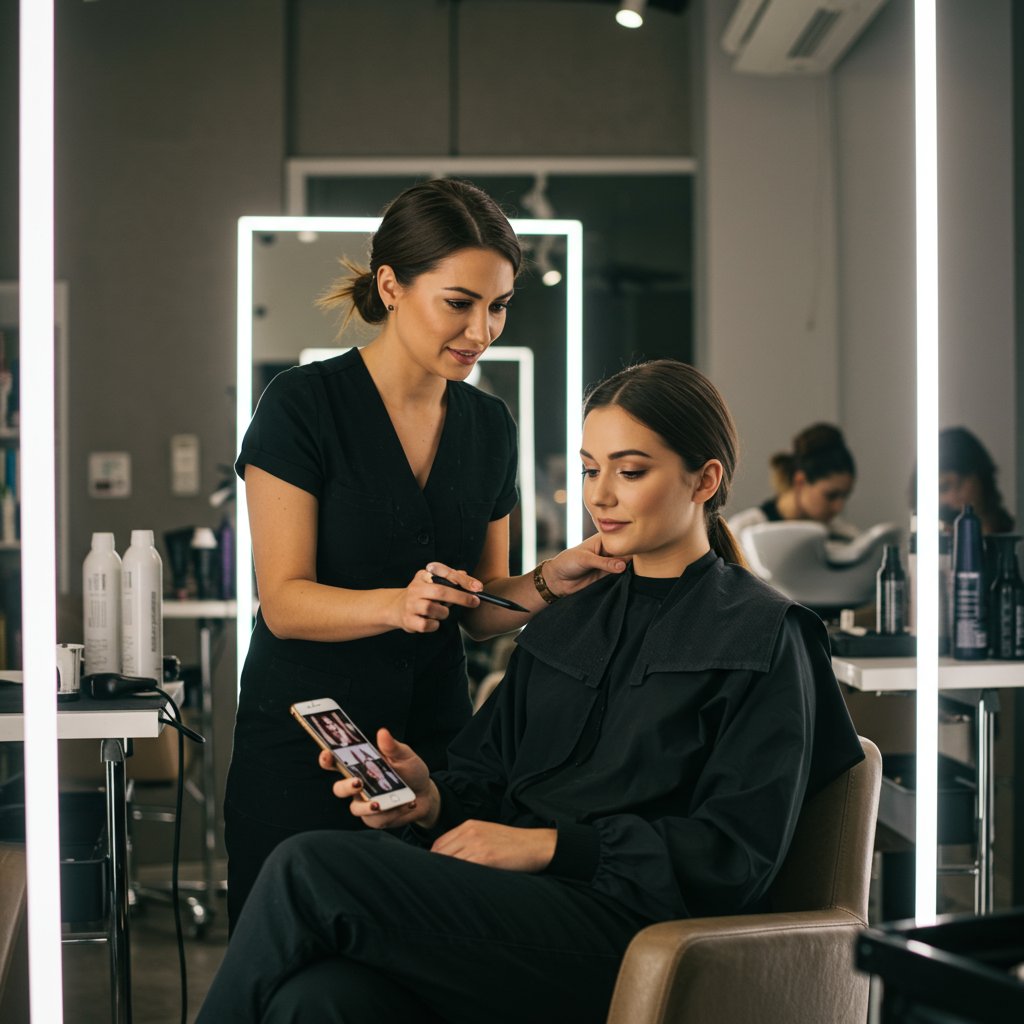
A great consultation involves more than just showing a picture. It's about discussing what you love about the look. Is it the glossy texture? The intricate braid? The bold shape? It's also about being realistic about your lifestyle, your hair's natural texture and health, and the amount of time you're willing to spend on daily styling. A stylist can look at a photo of a complex, gelled runway style and immediately know how to create a softer, more wearable version with mousse and shine spray that will suit your fine hair. They can adapt a sharp, geometric haircut to better flatter your jawline.
This partnership is essential for bridging the gap between a fleeting fashion moment and a lasting personal style. Your stylist can provide a customized 'prescription' of products and a step-by-step styling lesson to help you recreate the look at home. They can also perform the more technical services, like a precision cut or a custom color application, that form the foundation of your new style. Ultimately, they act as your personal interpreter, translating the abstract language of high fashion into a look that makes you feel confident and beautiful every day.
Quick Tips: Your Guide to Runway-Ready Hair at Home
Ready to experiment? Here are some quick tips for channeling your inner runway model in a wearable way.
- Focus on One Element: Don't try to replicate an entire avant-garde look. Choose one thing you love—the wet-look texture, a single braid, or a statement part—and make that the focus of your style.
- Product is Your Friend: The right products are non-negotiable. To get a sleek finish, you need a good shine serum and light-hold gel. For volume, a quality mousse and texturizing spray are essential. Invest in professional-grade products for the best results.
- Start Small: If you're new to bold styling, start with subtle changes. Try a deep side part held with a visible barrette, or slick back just the sides of your hair for a mini-wet look.
- Consider the Occasion: A high-gloss, slicked-back style might be perfect for a cocktail party but too much for the office. Match the intensity of your runway-inspired look to the event.
- Prep Your Canvas: Great style starts with healthy hair. Regular trims, deep conditioning treatments, and using heat protectant will ensure your hair is in the best possible condition to be styled.
Frequently Asked Questions About High-Fashion Hair
Can I really wear runway hairstyles in my daily life?
Absolutely, but with modification. The key is not to copy the look exactly, but to be inspired by it. Focus on a single element—like its texture, a simplified braid, or the placement of an accessory—and incorporate that into a more practical, everyday style. A professional stylist can be your best guide in this translation process.
What products are essential for creating a "wet look" at home?
To achieve a wearable wet look, you'll want a cocktail of products. Start with damp hair and apply a strong-hold gel or pomade at the roots, combing it back. Then, mix a hair oil or shine serum with a light-hold cream for the lengths to create a glossy, 'damp' finish rather than a stiff, drenched one. A finishing spritz of high-shine spray is the final touch.
How do I keep an intricate braid or updo from looking messy?
Preparation is key. Start with day-old hair, as it has more grip than freshly washed hair. Use a texturizing spray or dry shampoo to add grit. Keep your sections clean and maintain even tension as you braid. Finish the style with a strong-hold but flexible hairspray to tame flyaways without making the hair look stiff or crunchy.
Are bold hair colors from the runway damaging to my hair?
Any chemical process carries a risk of damage, especially when lightening hair to achieve vibrant or pastel colors. However, a professional colorist can mitigate this damage significantly. They will use bond-building treatments (like Olaplex), high-quality lighteners, and formulate the color to be as gentle as possible. They will also provide a custom at-home care routine to maintain the health of your hair and the vibrancy of the color.
How can I incorporate hair accessories without looking over-the-top?
Follow the 'less is more' principle. Choose one beautiful, high-quality accessory to be your statement piece. If you're wearing bold earrings, perhaps a simple, sleek barrette is enough. If your outfit is simple, you can afford to be more playful with your hair accessory. Placement is also crucial; a well-placed clip or headband can look chic and intentional, while too many can look cluttered.
What's the best way to show my stylist a runway look I want to adapt?
Save multiple photos of the look you love from different angles. Also, find photos of wearable interpretations of that trend (you can often find these in street style blogs or on Pinterest). During your consultation, be specific about what you like—is it the texture, the shape, the overall mood? This gives your stylist the creative information they need to design a version that's perfect for you.
Conclusion: Your Hair, Your Runway
High-fashion hair, in all its avant-garde glory, should be viewed as a boundless source of inspiration, not a rigid set of rules. It is a creative push that encourages us to think beyond the ordinary and to see the artistic potential in our own hair. The journey from runways to reality is about capturing a feeling, an idea, or a detail and weaving it into your own unique style narrative.
By learning to deconstruct these elaborate looks and focusing on their core elements—texture, shape, color, and accessories—you can borrow a piece of that high-fashion magic. Whether you experiment with a subtle wet-look sheen, a single architectural braid, or a well-chosen statement accessory, you are participating in the lifecycle of a trend. The most important step in this process is the collaboration with a skilled hair stylist, who can act as your expert interpreter, ensuring the final result is not only beautiful and inspired but also perfectly suited to you. So go ahead, flip through the magazines, scroll through the runway galleries, and find the look that speaks to you. Your personal runway awaits.


